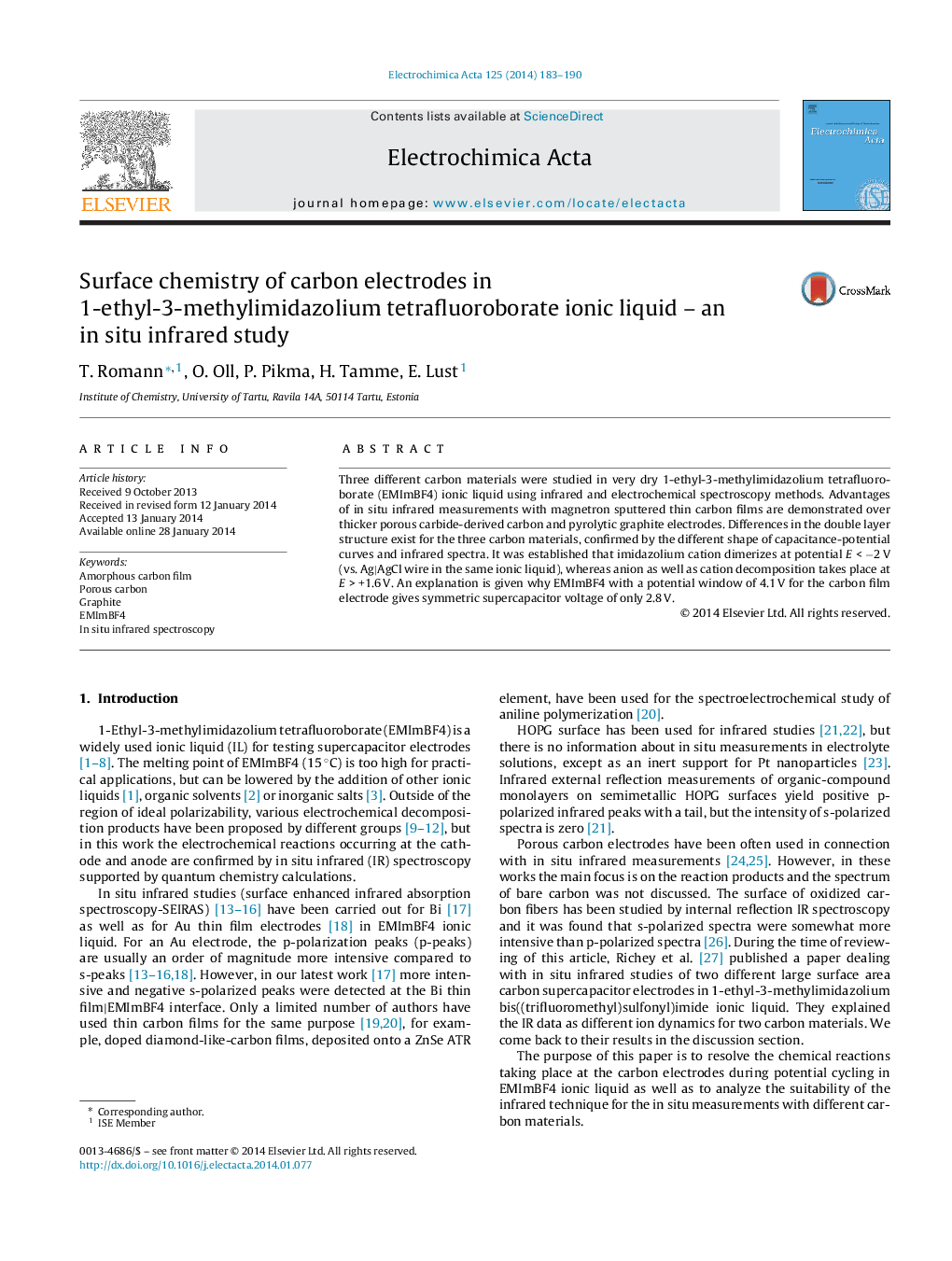| Article ID | Journal | Published Year | Pages | File Type |
|---|---|---|---|---|
| 186213 | Electrochimica Acta | 2014 | 8 Pages |
•Infrared spectra were obtained for three carbon|ionic liquid interfaces.•The carbon electrodes have different electrochemical and infrared spectra.•The thin carbon film electrodes have great potential for in situ infrared studies.•Supercapacitor cell voltage limiting reactions were solved.
Three different carbon materials were studied in very dry 1-ethyl-3-methylimidazolium tetrafluoroborate (EMImBF4) ionic liquid using infrared and electrochemical spectroscopy methods. Advantages of in situ infrared measurements with magnetron sputtered thin carbon films are demonstrated over thicker porous carbide-derived carbon and pyrolytic graphite electrodes. Differences in the double layer structure exist for the three carbon materials, confirmed by the different shape of capacitance-potential curves and infrared spectra. It was established that imidazolium cation dimerizes at potential E < −2 V (vs. Ag|AgCl wire in the same ionic liquid), whereas anion as well as cation decomposition takes place at E > +1.6 V. An explanation is given why EMImBF4 with a potential window of 4.1 V for the carbon film electrode gives symmetric supercapacitor voltage of only 2.8 V.
Graphical abstractFigure optionsDownload full-size imageDownload as PowerPoint slide
